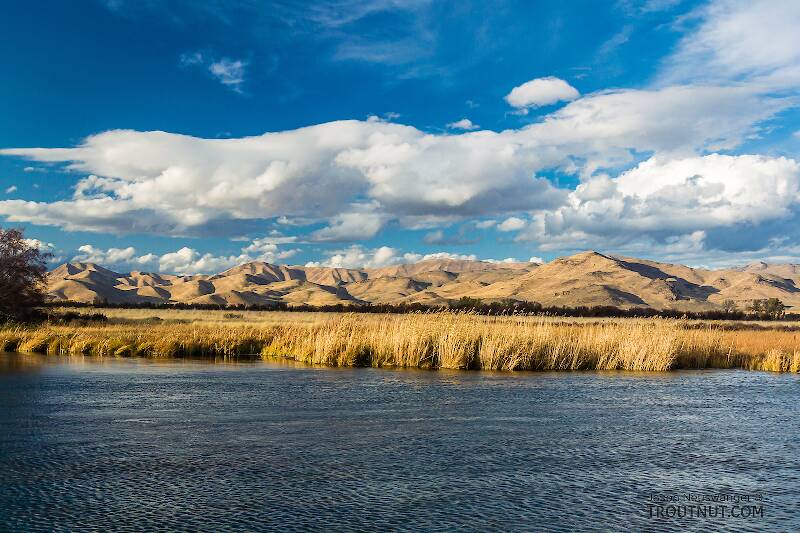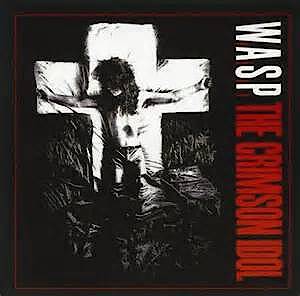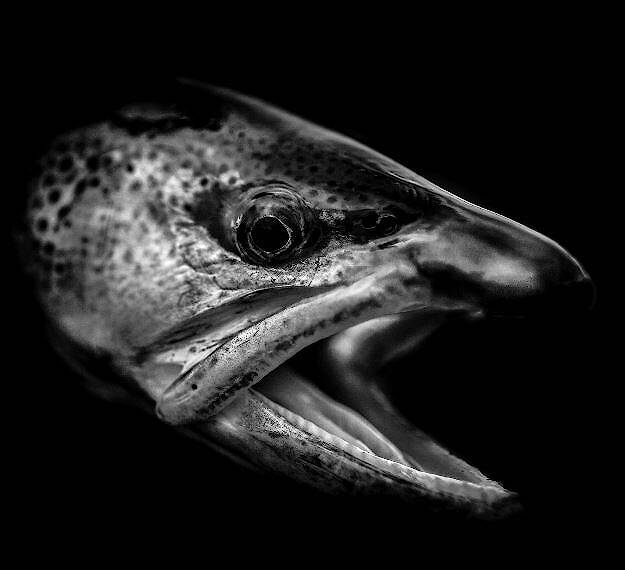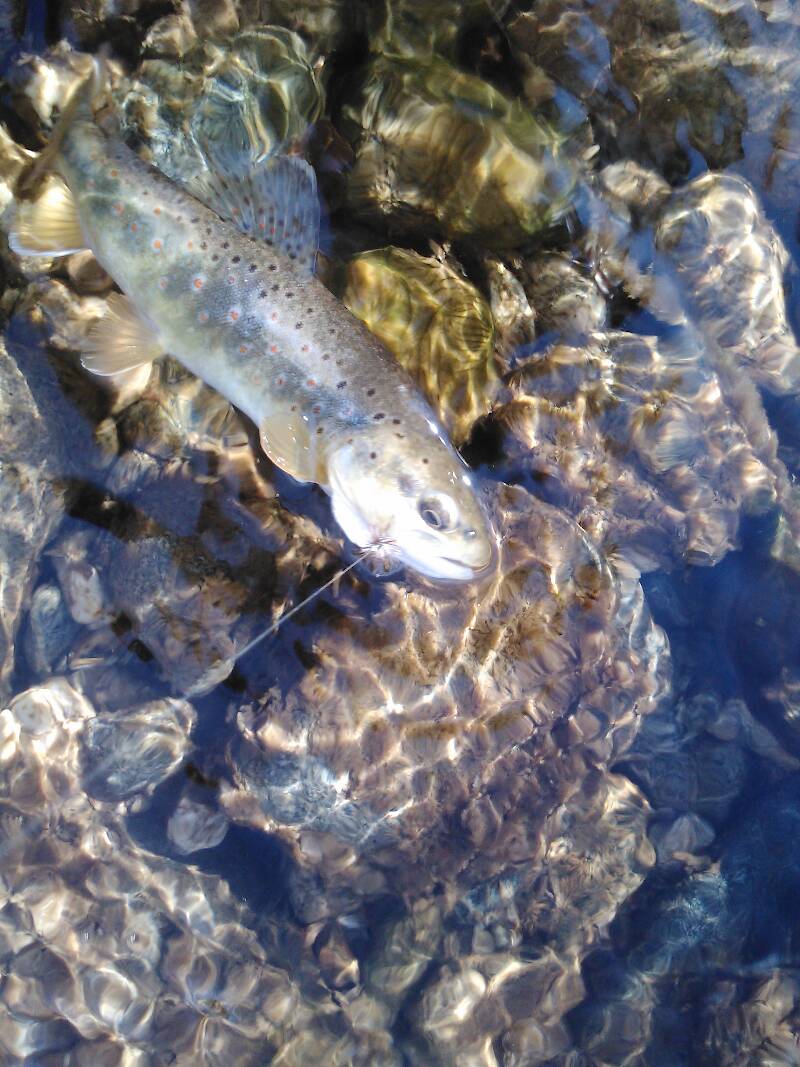
Salmonflies
Pteronarcys californica
The giant Salmonflies of the Western mountains are legendary for their proclivity to elicit consistent dry-fly action and ferocious strikes.
Featured on the forum

This is the first of it's family I've seen, collected from a tiny, fishless stream in the Cascades. The three species of this genus all live in the Northwest and are predators that primarily eat stonefly nymphs Merritt R.W., Cummins, K.W., and Berg, M.B. (2019).

Troutnut is a project started in 2003 by salmonid ecologist Jason "Troutnut" Neuswanger to help anglers and
fly tyers unabashedly embrace the entomological side of the sport. Learn more about Troutnut or
support the project for an enhanced experience here.
Adirman on Apr 20, 2017April 20th, 2017, 6:02 am EDT
The new Brexit style of nymphing? And what is that? PA Brownie, thanks for the heads up on the Daniels book :)
PABrownie on Apr 20, 2017April 20th, 2017, 6:19 am EDT
Other resources besides George Daniels Dynamic Nymphing:
-Nymphing The New way - by Jonathan White
also his podcast on askaboutflyfishing.com
-The movie Modern Nymphing, by us fly fisher team members Lance Egan & Devin Olsen
-Devin Olsens blog @ www.tacticalflyfisher.com
-Domenick Swentoskys article on his blog troutbitten.com regarding the mono rig: https://troutbitten.com/2016/02/03/the-mono-rig-and-why-fly-line-sucks/
-Jonathan Barnes youtube clip: https://www.youtube.com/watch?v=hpPaOi58BvQ&t=234s
-George Daniels presentation: https://www.youtube.com/watch?v=Y9XlK3Q5mcU&t=76s
-Joe Humphreys book Trout Tactics,- learn the basics from the greatest nympher of all time
-Nymphing The New way - by Jonathan White
also his podcast on askaboutflyfishing.com
-The movie Modern Nymphing, by us fly fisher team members Lance Egan & Devin Olsen
-Devin Olsens blog @ www.tacticalflyfisher.com
-Domenick Swentoskys article on his blog troutbitten.com regarding the mono rig: https://troutbitten.com/2016/02/03/the-mono-rig-and-why-fly-line-sucks/
-Jonathan Barnes youtube clip: https://www.youtube.com/watch?v=hpPaOi58BvQ&t=234s
-George Daniels presentation: https://www.youtube.com/watch?v=Y9XlK3Q5mcU&t=76s
-Joe Humphreys book Trout Tactics,- learn the basics from the greatest nympher of all time
Adirman on Apr 20, 2017April 20th, 2017, 7:52 am EDT
Awesome, thank you sir :)
Iasgair on Apr 20, 2017April 20th, 2017, 2:07 pm EDT
Dale1386, reading your opening post, you mentioned how your line gets caught on the loop to loop connections from your fly line and leader.
True Czech nymphing uses no fly line at all. you're supposed to use a very long leader, 45 to 50 feet long.
Check out Jonathan Barnes, A Guide to Czech Nymphing. You can see this on his You Tube videos.
I'd bring the link up for you, but I'm having trouble doing so.
Jonathan explains it all pretty much in detail right from the beginning of the video.
True Czech nymphing uses no fly line at all. you're supposed to use a very long leader, 45 to 50 feet long.
Check out Jonathan Barnes, A Guide to Czech Nymphing. You can see this on his You Tube videos.
I'd bring the link up for you, but I'm having trouble doing so.
Jonathan explains it all pretty much in detail right from the beginning of the video.
PABrownie on Apr 21, 2017April 21st, 2017, 2:18 am EDT
Dale1386, reading your opening post, you mentioned how your line gets caught on the loop to loop connections from your fly line and leader.
True Czech nymphing uses no fly line at all. you're supposed to use a very long leader, 45 to 50 feet long.
Check out Jonathan Barnes, A Guide to Czech Nymphing. You can see this on his You Tube videos.
I'd bring the link up for you, but I'm having trouble doing so.
Jonathan explains it all pretty much in detail right from the beginning of the video.
Semantics again, but regardless czech nymphing actually uses shorter leaders and heavier flys. French / spanish / what is now dubbed "euro" nymphing utilizes long leaders, 25'+.
I've also already posted jonathans video above, might want to read the whole thread before posting..
Wbranch on Apr 21, 2017April 21st, 2017, 11:54 am EDT
you're supposed to use a very long leader, 45 to 50 feet long.
In some states leaders longer than 18' are not permitted in fly fishing waters.
You could just as well get a 9'- 11' noodle rod with a ultra light spinning reel filled with 6# Berkley Nanofil, a float, and nymphs of your choice and effortlessly achieve 80' drag free drifts.
Catskill fly fisher for fifty-five years.
Iasgair on Apr 22, 2017April 22nd, 2017, 10:26 am EDT
you're supposed to use a very long leader, 45 to 50 feet long.
In some states leaders longer than 18' are not permitted in fly fishing waters.
You could just as well get a 9'- 11' noodle rod with a ultra light spinning reel filled with 6# Berkley Nanofil, a float, and nymphs of your choice and effortlessly achieve 80' drag free drifts.
Well, if that's how you prefer to do it, go ahead. I live in Colo. so I'm not familiar with the laws in N.C., are long leaders illegal there? Just asking.
PAbrownie, your link doesn't open up to Jonathan Barnes. Instead it brought up everything but him.
Wbranch on Apr 22, 2017April 22nd, 2017, 11:24 am EDT
so I'm not familiar with the laws in N.C., are long leaders illegal there? Just asking.
I have no idea since I live in PA.
Catskill fly fisher for fifty-five years.
Wbranch on Apr 22, 2017April 22nd, 2017, 4:54 pm EDT
Here is the rule in PA;
Outside of C&R FFO waters any leader length is permitted.
§ 65.14. Catch and release fly-fishing only.
(a) The Executive Director, with the approval of the Commission, may designate waters as catch and release fly-fishing only. The designation of waters as catch and release fly-fishing only shall be effective when the waters are so posted after publication of a notice of designation in the Pennsylvania Bulletin.
(b) It is unlawful to fish in waters designated and posted as catch and release fly-fishing only except in compliance with the following requirements:
(1) Fishing may be done with artificial flies and streamers constructed of natural or synthetic materials so long as all flies are constructed in a normal fashion with components wound on or about the hook or hooks. Use or possession of any other lures or substances is prohibited.
(2) Fishing shall be done with tackle which is limited to fly rods, fly reels and fly line with a maximum of 18 feet in leader material or monofilament line attached. Spinning, spincast and casting rods and reels are prohibited.
Outside of C&R FFO waters any leader length is permitted.
Catskill fly fisher for fifty-five years.
Adirman on Apr 23, 2017April 23rd, 2017, 1:46 am EDT
Ordered the Daniels book, cant wait for it get here! :)
Iasgair on Apr 23, 2017April 23rd, 2017, 12:27 pm EDT
Adirman, thats an incredibly informative book. You will learn so many different ways it will make you head explode.
Good reading.
Good reading.
PABrownie on Apr 24, 2017April 24th, 2017, 3:56 am EDT
As previously mentioned on another topic wbranch, I fish the little j, and spring creek, in non ffo areas, I'm well aware of the leader regs in ffo areas. You're almost assuming I use a long leader at all times, I fish many different ways, euro nymphing with long leaders just being one of them.
PABrownie on Apr 24, 2017April 24th, 2017, 3:57 am EDT
Also, I'm glad this topic also spurred your curiousity so much to post on PAflyfish as well, yah ballbuster... ;)
Wbranch on Apr 24, 2017April 24th, 2017, 7:10 am EDT
Yep, that is my middle name.
Catskill fly fisher for fifty-five years.
PABrownie on Apr 24, 2017April 24th, 2017, 8:21 am EDT
---Jonathan Barnes - onstream-guide.com---
The urban myth is that French Nymphing was developed on crystal clear French streams where crack fly fishers outnumbered the super wary trout by 10 to 1.
Like all urban myths there maybe elements of truth in it, but fishing nymphs at longer range was developed independently by others including the Czechs and Poles.
French Nymphing is a modern often FLY LINELESS form of fishing nymphs at longer distances from the angler (anything from 3-6 + metres) using a tapered leader often called a French leader.
For a picture and video guide to the actual fishing technique please visit this page.
This gives a huge advantage to the competent fly fisher in terms of stealth and in the right hands can be a devastating technique. Indeed the technique is a logical extension of the Polish or Czech nymphing styles already covered. Long nymphing is perhaps the politically correct name but French nymphing sounds better and more interesting.
OK first the logical question...Why cant I just stick some nymphs on my tippet and fish my 9 foot with a 2 or 3 weight line at the same range? Well obviously you can.
However you will not catch as many fish and maybe lucky to catch any at all. The fly line contains mass or weight. Even a light fly line is difficult to hold above the water without dragging the flies backwards unnaturally. If fly line lands on the water it can spook fish. It makes good presentation at range impossible
in many cases.
Why FLY LINELESS? Fly Line adds weight. Instead a long tapered leader of a monofilament/co-polymer material is used which may be 3 to 15 metres in length. Because this is practically weightless compared with the same length of fly line. In fact unlike in standard fly casting when French Nymphing Fly fishers use the weight of the nymphs rather than the fly line to load the rod and execute the cast. To this end specialised light rods (typically 2 or 3 weight) are used of at least 10 feet in length. The rods are very sensitive and this helps the fly fisher feel as well as see the takes. Here is the technique demonstrated.
French nymphing gives the modern fly fisherman a way of fishing nymphs at range with control. The technique can be phenomenal for fishing deep pockets on large rivers and in the heads of smaller streams. In high summer when the river is low and hatches are sparse or non existent the technique really comes into its own.
Wbranch on Apr 24, 2017April 24th, 2017, 12:19 pm EDT
PABrownie,
How is the cast executed? Does one use such a heavy nymph that the cast is like a "chuck and duck"? On the Salmon River in NYS guys developed a method to throw big weighted nymphs, Slinkies, and/or big gobs of OO buck shot sized split shot. They used 9' - 10' rods with just 100' of running line. The kind of fly line guys used to use behind their shooting heads before fly line development really took off to create lines for every known niche market.
They would strip off 40' - 50' of the leader and thin running line then throw it somewhat behind them on an angle and let the swift current bring it up a bit in the water and when it was just a few inches under the surface they would put there arms and backs into lifting all the lead up out of the water and launch it in an arc towards wherever their target was. You could see it sailing in a pretty high arc towards some distant spot out in the river.
Is that somewhat how 40' casts are made with these light fly rods?
How is the cast executed? Does one use such a heavy nymph that the cast is like a "chuck and duck"? On the Salmon River in NYS guys developed a method to throw big weighted nymphs, Slinkies, and/or big gobs of OO buck shot sized split shot. They used 9' - 10' rods with just 100' of running line. The kind of fly line guys used to use behind their shooting heads before fly line development really took off to create lines for every known niche market.
They would strip off 40' - 50' of the leader and thin running line then throw it somewhat behind them on an angle and let the swift current bring it up a bit in the water and when it was just a few inches under the surface they would put there arms and backs into lifting all the lead up out of the water and launch it in an arc towards wherever their target was. You could see it sailing in a pretty high arc towards some distant spot out in the river.
Is that somewhat how 40' casts are made with these light fly rods?
Catskill fly fisher for fifty-five years.
Afishinado on Apr 25, 2017April 25th, 2017, 12:14 am EDT
French nymphing is most effective for spooky fish using tiny nymphs in skinny water. The coiled sighter is used for both visibility and stealth (no splash down with an all mono sighter).
https://bluequillangler.com/learn-fly-fishing/european-nymphing-methods/french-nymphing/
Here is some info to read on other Euro techniques as well as flies and tackle:
https://bluequillangler.com/learn-fly-fishing/european-nymphing-methods/
“The more I live, the more I learn. The more I learn, the more I realize, the less I know.†– Michel Legrand
https://bluequillangler.com/learn-fly-fishing/european-nymphing-methods/french-nymphing/
Here is some info to read on other Euro techniques as well as flies and tackle:
https://bluequillangler.com/learn-fly-fishing/european-nymphing-methods/
“The more I live, the more I learn. The more I learn, the more I realize, the less I know.†– Michel Legrand
PABrownie on Apr 25, 2017April 25th, 2017, 1:44 am EDT
PABrownie,
How is the cast executed? Does one use such a heavy nymph that the cast is like a "chuck and duck"? On the Salmon River in NYS guys developed a method to throw big weighted nymphs, Slinkies, and/or big gobs of OO buck shot sized split shot. They used 9' - 10' rods with just 100' of running line. The kind of fly line guys used to use behind their shooting heads before fly line development really took off to create lines for every known niche market.
They would strip off 40' - 50' of the leader and thin running line then throw it somewhat behind them on an angle and let the swift current bring it up a bit in the water and when it was just a few inches under the surface they would put there arms and backs into lifting all the lead up out of the water and launch it in an arc towards wherever their target was. You could see it sailing in a pretty high arc towards some distant spot out in the river.
Is that somewhat how 40' casts are made with these light fly rods?
Yes, and no.
If you are fishing a pair of light nymphs the casting stroke more closely resembles a traditional cast, except no fly line, this is where the 2-3wt rods come in handy so as the mono and light weighted flies can actually bend the rod, you still have loops and false casts when throwing light nymphs at distance with a mono-rig.
If you are throwing heavy nymphs, or nymphs with added weight on leader like split shot then yes the cast more resembles a "lob", if i where to video myself casting heavy nymphs my cast resembles a traditional tuck cast (joe humphreys), only the very begining of the cast is slower to pick up the heavy nymphs, once you feal the weight of the nymphs behind you you can make a quick forward stroke and "lob" them if you will forward. There still is back casts with heavy nymphs sometimes, only the "pause" between back and forward casts is much slower because you have to wait for the weight to get completely behind you.
PABrownie on Apr 25, 2017April 25th, 2017, 1:48 am EDT
And to add to the discussion even further, I often throw dry-droppers with a mono-rig, and that cast is almost no different than a classic cast other than you have to be much more aware of how your rod loads and force the rod to load and unload on command ie: faster strokes and harder pauses, I'm not a pro but I can fish a dry-dropper on a mono rig 30' away, its a challenge but to me its worth it, no mending, no drag, can fish over fast currents with a direct drag free drift, I enjoy it very much
Quick Reply
Related Discussions
Topic
Replies
Last Reply





